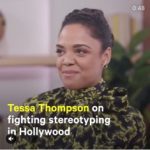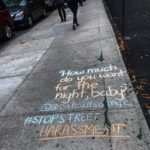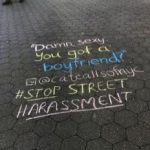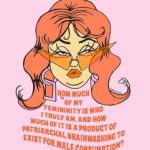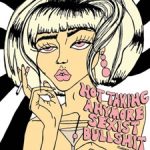By: Hanna Xue

Since gaining the right to vote 100 years ago, American women have become as politically active as, if not more than, their male counterparts. In the last few decades, women’s voter turnout has slowly but surely matched and then exceed the turnout rate for men – women have comprised a majority of the electorate since 1964[1]. This pattern is reflected in the voting habits of all racial groups – Black, White, and Latina women consistently outvote men in their respective groups – except for one – Asian Americans. Asian American women and men have voted at similar rates for the last two decades[2]. At a first glance, this may indicate parity in the political behavior of Asian men and women. One might assume that if they show up to the polls at roughly the same rate, then they likely possess the same resources and attitudes towards political activity. However, a more comprehensive analysis of factors related to voting reveals that this is hardly the case. So why do Asian American women, who comprise half of the fastest growing minority population in the United States, show up to the polls so slowly? Well, the answer may have something to do with a phenomenon called immigrant socialization.
Immigrant socialization refers to the process by which immigrants learn to reconcile their original cultural identity with the host culture in which they find themselves[3]. Adaptation can be facilitated with increased length of residence and can result in a higher sense of social belonging, which is critical to political participation. A 2018 study by the Journal on Race, Ethnicity, and Politics reports that social belonging precedes political engagement in the sense that an individual must feel integrated into a country before becoming involved in the political system[4]. It should be noted that nearly three quarters of the Asian American population is comprised of immigrants, and Asian Americans are poised to become the largest immigrant community in America by 2055[5]. Thus, immigrant socialization factors affect a majority of the Asian population, and therefore a majority of current or future voters. Moreover, a survey on the identity choices of Asian Americans shows that female Asian Americans are significantly less likely to form a U.S. based identity in comparison to their male counterparts[6]. In other words, Asian American women are more likely than men to self-identify as “Asian” or as part of their specific ethnic group (e.g. Chinese, Indian) than as “Asian American” or “ethnic American” (e.g. Chinese American, Indian American). This subtle preference in word choice could indicate a less salient sense of American identity among Asian American women which, as stated previously, could hamper involvement in the political process. Asian immigrant women may have more trouble forging an American identity than men because, in addition to all of the usual obstacles immigrants face when moving to a new country, women have the additional trouble of confronting sexism. Upon arriving in the United States, many Asian immigrants, regardless of gender, have to adapt to a new linguistic, cultural, and geographic environment to develop that sense of belonging, but unlike Asian immigrant men, women must also navigate a completely new set of sexist and patriarchal oppressions. This unique experience of adaptation means that immigrant Asian women may participate in politics at a completely different rate and with different means than their male counterparts[7]. Even if Asian American women possess the same resources and skills as men, this added layer of gender oppression may make it more difficult for them to adapt an American cultural identity, and therefore participate in politics. This observation holds when ethnicity and education level are accounted for; foreign born Asian women are still less likely to vote than foreign born Asian men that possess an equal level of education[8]. Immigrant socialization is a process that most Asian Americans must go through, but existing systems of oppression create more obstacles for Asian American women to overcome. As a result, their rate of political participation is compromised.
There are a host of other factors that might contribute to the generally low voter turnout rates among Asian American women, however, one cannot deny the impact that poor levels of immigrant socialization have on the group’s voting habits. Existing social, economic, and cultural factors intersect in unique ways to make the process of immigrant socialization, and therefore political participation, even more difficult for Asian women than men. Low voter turnout for Asian American women is not necessarily a result of personal apathy towards politics. Rather, they are the result of systematic barriers to their participation.
[1]“Gender Differences in Voter Turnout,” Center for American Women in Politics, accessed January 9, 2019, http://www.cawp.rutgers.edu/sites/default/files/resources/genderdiff.pdf.
[2]“Gender Differences,” Center for American Women in Politics, January 9, 2019.
[3]Qingwen Dong, Dean Phillip Gundlach, and John C. Phillips. “The Impact of Bicultural Identity on Immigrant Socialization through Television Viewing in the United States,” Intercultural Communication Studies, 15, no. 2 (2006): 63, https://web.uri.edu/iaics/files/06-Qingwen-Dong-Dean-Phillip-Gundlach-John-C.-Phillips.pdf.
[4]Natalie Masuoka, Hahrie Han, Vivien Leung, and Bang Quan Zheng. “Understanding the Asian American Vote in the 2016 Election,” Journal of Race, Ethnicity and Politics, 3, no. 1 (2018): 190, doi: 10.1017/rep.2017.34.
[5]Gustavo Lopez, Neil G. Ruiz, and Eileen Patten, “Key facts about Asian Americans,” September 8, 2017.
[6]Pei‐te Lien, M. Margaret Conway, and Janelle Wong. “The Contours and Sources of Ethnic Identity Choices Among Asian Americans,” Social Science Quarterly, 84, no. 2 (2003): 471, doi: 10.1111/1540-6237.8402015.
[7]Nadia E. Brown. “Political Participation of Women of Color: An Intersectional Analysis,” Journal of Women, Politics & Policy, 35, no. 4 (2014): 317, doi: 10.1080/1554477X.2014.955406.
[8]Christian Dyogi Phillips and Taeku Lee, “Superficial Equality,” 381.



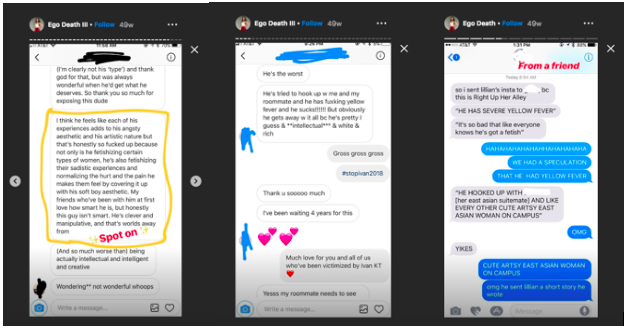

 on natural resources affecting the environment more than ever before.
on natural resources affecting the environment more than ever before. but only keep hold of them for half as long. The amount of discarded clothes tends to be baffling; on average, 5800 pounds of clothing are burned or landfilled per second. As a result, this amounts to around 182 billion pounds of clothing a year, with the United States alone contributing 26 billion pounds to this obscene number. Taking over 200 years to decompose, our actions are causing clothes to pile up for an indeterminate amount in these landfills and are causing great damage.
but only keep hold of them for half as long. The amount of discarded clothes tends to be baffling; on average, 5800 pounds of clothing are burned or landfilled per second. As a result, this amounts to around 182 billion pounds of clothing a year, with the United States alone contributing 26 billion pounds to this obscene number. Taking over 200 years to decompose, our actions are causing clothes to pile up for an indeterminate amount in these landfills and are causing great damage.








